Posts Tagged ‘nail fungus treatment’
Home Remedies to Cure Nail Fungus
Home Remedies to Cure Nail Fungus
Is there any evidence that they work?
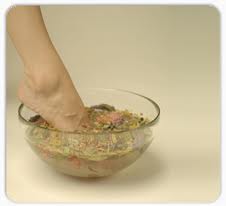 Many people suffer from onychomycosis, more commonly known as nail fungus or toenail fungus. Prescription drugs are available to cure this condition but many of them have been found to have side effects, such as Liver Damage, that can be severe. Because of this factor, people who have this condition search out alternative remedies to treat their onychomycosis. This begs the question, “Do these home remedies work? And if so, are they safe and which ones are the most effective?”
Many people suffer from onychomycosis, more commonly known as nail fungus or toenail fungus. Prescription drugs are available to cure this condition but many of them have been found to have side effects, such as Liver Damage, that can be severe. Because of this factor, people who have this condition search out alternative remedies to treat their onychomycosis. This begs the question, “Do these home remedies work? And if so, are they safe and which ones are the most effective?”
Several different home remedies have been suggested over the years for onychomycosis and other nail fungus treatment. Clinical trials have not been run on any of these home remedies; however there is anecdotal evidence that many of them do work. Sometimes it depends on the individual, or the kind of nail fungus they have, as to which remedies work and which don’t. Another factor is the ability of the remedy to get under the nail sheath and reach the infected area, which is usually underneath and in the nail bed itself. In favor of the home remedy, there is usually little to no risk of making anything worse than it already is, and these are usually inexpensive to try.
If the nail bed and lunula are affected, topical and over the counter medicines will not be effective, which also eliminates most home remedies. In these cases the only cure is an oral medication which requires a prescription from a doctor.
Remedy suggestion #1: Listerine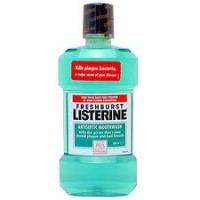
Listerine, a mouthwash that advertises the destruction of bacteria that cause gum disease is a very popular and inexpensive treatment for finger or toenail fungus. After all, if it destroys one kind of bacteria, why shouldn’t it be effective for getting rid of other kinds of bacteria? Ingredients in Listerine are ethanol, thymol, eucalyptol (from eucalyptus), and benzoic acid.
Standard treatment for onychomycosis using Listerine is to soak the affected area in Listerine for 10 minutes every night until the affected area clears.
Onychomycosis is caused by a few different factors. Infection from Candida is one of them, so if the Listerine can penetrate to the site of the infection, it is possible, even probable that this will be an effective treatment as Listerine has been shown to be effective against Candida. Another cause of onychomycosis is dermatophyte, which have not been demonstrated to be as negatively affected by Listerine’s chemical make-up. As the majority of onychomycosis are caused by dermatophyte, Listerine may not be effective in all cases of nail fungus as a home remedy.
Remedy suggestion #2: Vinegar
Vinegar, with its acidic environment helps to destroy the dermatophyte that cause onychomycosis. Also known as acetic acid, this remedy is made up of one part vinegar and two parts water. By soaking the affected area for 20 minutes per day, the acetic acid is able to create a less habitable climate for the fungus, thus discouraging its continued growth. Continue treatment until the affected area clears up. It is also possible that the skin around your nail will become irritated. If this is the case, treatment should be discontinued.
There has been no significant difference discovered in using apple cider vinegar vs. white vinegar nor over-the-counter remedies that contain acetic acid (vinegar) vs. using the vinegar and water mixture described above.
Remedy Suggestion #3: Vicks VapoRub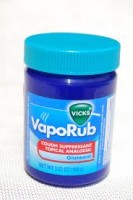
Because of the inherent make up of Vicks VapoRub, it does a better job of penetrating the nail to get to the source of the infection. This is a commonly recommended home remedy from physicians as they have seen improvements in patients who use this product. The petroleum jelly based mixture, infused with oils, such as menthol, allow for better infusion of the infected area.
Topical application is the only appropriate way to use Vicks VapoRub (after all, would you want to eat that stuff?) The “dose” is up to the applicant. The most common method of cure is to apply the substance to the affected nails and wear a sock or glove over the treatment. To prevent a re-occurrence of infection somewhere else, as fungus loves a moist environment, make certain to use a sock or glove that is 100% cotton for breath-ability.
Remedy suggestion #4: Tea Tree Oil
Tea Tree Oil, or Melaleuca Alternifolia has been found to be an effective natural anti-fungal. When applied in vitro (meaning poured into a dish, thus soaking like many of the other listed methods) Tea Tree Oil was found to discourage fungus growth in all of the common causes of onychomycosis, including Trichophyton mentagrophytes, Trichophyton rubrum, and Candida infections. Tea Tree Oil has been used in clinical trials and one of them reported a 20% cure rate while the other reported a 0% cure rate. The determining factor seems to be using 100% Tea Tree Oil instead of a diluted solution. The appearance of the nail fungus seemed to improve in people who used the 100% solution. Tea Tree Oil is recommended as a topical solution for many skin fungus conditions and has been seen to be effective in treating tinea pedis, a minor foot fungus. This is probably because the Tea Tree Oil is able to penetrate the infected area, thus reaching and eradicating the fungus.
Remedy Suggestion #5: Green Tea Extract
Camellia Sinensis or Green Tea Extract is another herbal remedy that has shown antifungal properties. When applied in vitro (in a dish) Green Tea Extract proved able to kill Candida glabrata. No one has done clinical trials with this herbal remedy so its effect on dermatophyte, and therefore onychomycosis is currently unknown.
Some Useful Information When Looking for Nail Fungus Treatments
Some Useful Information When Looking
for Nail Fungus Treatments
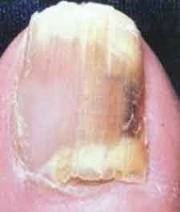 Nail fungus, known medically as Onychomycosis, is not an easy condition to treat. Primarily cosmetic in nature, it most commonly affects the toenails.
Nail fungus, known medically as Onychomycosis, is not an easy condition to treat. Primarily cosmetic in nature, it most commonly affects the toenails.
People who are at risk for contracting nail fungus are:
- Older people,
- Males,
- People with diabetes
- People who have had trauma to their nails
- People with hyperhydrosis
- People who suffer from peripheral vascular disease
- People who have athlete’s foot
- People with an immunodeficiency
- People who practice poor hygine
- People who spend a lot of time in the water
There are a number of different species of fungus that can infect the nail. It is also common to find several different fungal infections at one time. The visible symptoms of nail fungus are a thick, discolored and distorted looking nail.
Curing nail fungus has historically been problematic. Modern medicine has found several new options for curing nail fungus. Visiting your health care provider to determine what kind of infection you have and confirming that it is in fact a nail fungus, instead of some other nail infection, is paramount to a successful treatment regimen. Discovery of this is fairly simple. Your doctor can take scrapings and/or clippings of the infected nail to examine under a microscope, and if necessary, send to a lab for culture.
Once you know what you are dealing with, your nail fungus treatment can begin. A common treatment option is an oral prescription antifungal medication. Two older, and therefore proven and well documented, medications are griseofulvin and fluconazole. Unfortunately these medications aren’t effective on all forms of nail fungus and for the fluconazole, the treatment can last up to 9 months.
Two new comparatively to the market prescription medications that have proven effective against nail fungus are terbinafine and itaconazole. These have both proven to be more effective than their older cousins, fluconazole and griseofulvin.
Terbinafine is taken daily over the course of three months. It is reported to be well tolerated with no negative drug interactions with other medications or significant side effects.
Itaconazole runs in a weekly cycle of three weeks on and three weeks off over the course of 3-5 months. People who take a protease inhibitor should not take itaconazole.
For those who do not wish to take an oral prescription, there are alternatives.
A topical medication is now available for curing nail fungus. Your doctor can prescribe using a nail polish containing 8% ciclopirox solution. You paint this on your nail, as you would a regular nail polish, and the adjacent skin every day for 12 months. This treatment is not as effective as oral prescription medication and the course of treatment is lengthy.
As you consider how to treat your onychomycosis, please keep in mind that no matter what medication you choose and however long the treatment cycle is, the nail has to grow out completely clear before the fungus is considered gone. It can take some people more than a year to replace a disfigured toenail.
There are some folks who opt for surgery. This is a more drastic treatment for nail fungus and should be considered a later option as it can be both painful and possibly disfiguring. If other options are unavailable to you because other medications are either ineffective or inappropriate, this can be a good solution to your nail fungus problem.
Alternative medicine treatments are another possible solution. Tea Tree Oil has been shown in some studies to cure nail fungus. The Mayo Clinic has one published report if you are interested in reading up on this treatment.
There are many home remedies that have been suggested by individuals who have had success with them. Most of these are not considered to be viable treatments by the medical community, but that does not mean they cannot prove effective. Home remedies include:
- A 20-30 minute foot soak in vinegar, lemon juice, Listerine, or a solution of bleach
- Nutritional supplements such as acidophilus
- Applying baking soda, garlic, olive oil or Vick’s VapoRub to the infected nail
Modern medicine has created many successful options when it comes to curing nail fungus. Consulting your health care provider and doing some research yourself are two positive steps in the right direction. Armed with the correct information, you and your health care provider can create an effective plan to solve your nail fungus problem.
The Ins and Outs of Treating Fingernail Fungus Infection
The Ins and Outs of Treating Fingernail Fungus Infection
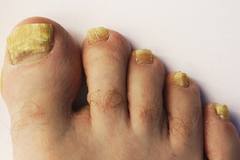 Our nails are mad of keratin, which is similar in structure to bone but not the same. It works to protect parts of the skin and tends to be a telltale indicator for signs of internal problems.
Our nails are mad of keratin, which is similar in structure to bone but not the same. It works to protect parts of the skin and tends to be a telltale indicator for signs of internal problems.
Most people are familiar with toenail fungus infections. A lot of people have them and they are caused by the fact that toes tend to spend a lot of time in dark, damp environments and come into contact with a lot of things that may be carriers for fungal spores. However fingernails can also become infected by fungus. The first sign of infection is usually the nail becoming discolored and then thickening, especially along the tips. This looks very unpleasant and is an embarrassment to people who suffer from it. Avoid painting your nails with fingernail polish if this occurs as the polish will seal in humidity and give the fungus a better breeding environment. Deciding that the problem “will go away on its own” is also a bad idea. Treating this fungus is the smartest thing you can do.
Nail Fungus Treatments
There are several available treatments for nail fungus, some of which include taking oral antifungal medications. Many people try to avoid this as some of these medications have rather harsh side effects. Antifungal solutions and ointments are available over the counter and are comparatively well priced. Several of these are alternative remedies that use natural oils with antifungal properties
The most popular and effective nail fungus treatment is ClearFungus. This is a combination of essential oils to both kill the fungus and help heal and moisturize the surrounding skin. No side effects have been reported during use of this natural medication.
Some important maintenance tips to encourage the healing process if you have a nail fungus infection:
- Keep a strict regimen of applying the antifungal solution to the infected nail(s)
- Maintain good hygiene, even if it means changing your regular habits
- Wash your hands regularly and use soap. Scrub your nails with a nail brush to remove any dirt that gets underneath or into the ridges of the nail
- Avoid using your nails as tools to open or unscrew anything as this can abrade the nail and allow the microorganisms that cause the fungal growth to bury themselves further in your nail and nail bed
- If you choose to go to a salon to get a manicure or pedicure, then make sure your chosen salon washes and sterilizes its equipment so you reduce the risk of contracting infection
- Don’t wear nail polish to cover up the embarrassment of having a fungal infection. The polish will hold moisture inside the nail and nail bed, encouraging fungal growth and further damage to the area.
- Use, and don’t share your own nail maintenance tools, like clippers, file, cuticle stick, etc. as this lowers the chance of contracting a fungal infection
- Wash your hands and feet regularly and dry them thoroughly.
- Catching and treating a nail fungus infection early on will avoid problems in the future. Having the antifungal solution available is the best safety tip.
- Use gloves when dealing with chemicals to avoid exposing your fingernails to futher damage
If you find that the infection persists, seek advice from your medical professional as there may be other symptoms and problems that linger unseen in your body that should be addressed.